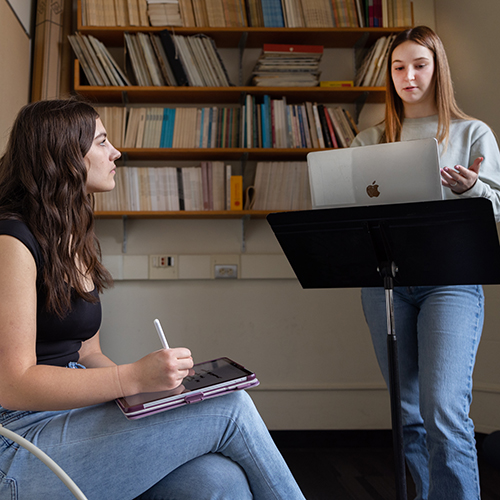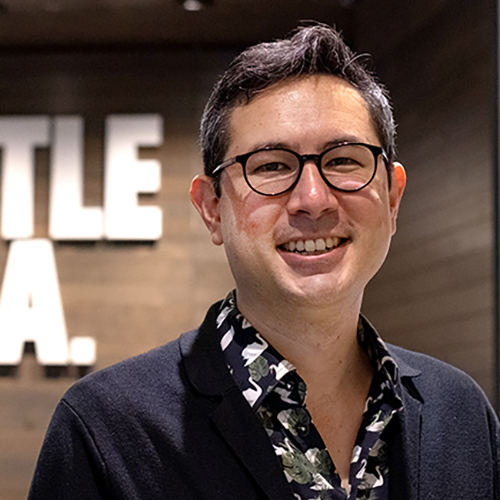When Jim Gregory taught a course on the Seattle General Strike, he made a deal with his students. If they produced papers of sufficient quality, he would build a website about the strike and include their work. The students kept their end of the bargain, so Gregory created the website.
“After that, I was hooked,” says Gregory, UW professor of history. He created similar websites for other courses and soon discovered that the sites were attracting thousands of visitors, including teachers. So Gregory decided to think bigger.
With support from several A&S centers—the Simpson Center for the Humanities, the Center for Labor Studies, and the Center for the Study of the Pacific Northwest—and King County Heritage4Culture, Gregory and graduate student Trevor Griffey launched an ambitious website, the Seattle Civil Rights and Labor History Project, in 2004. The site includes dozens of original essays, streaming videos of more than 70 oral histories, hundreds of photos, documents, and newspaper articles.

“This website provides the most complete set of resources about civil rights struggles for any city outside the South,” says Gregory. “It demonstrates the multiracial history of civil rights activism in the Pacific Northwest and explores the relationship between civil rights and labor struggles through the twentieth century.”
A visitor could spend hours exploring the site. In addition to information about local civil rights groups and Seattle’s ethnic press, there are ten “special sections” on topics ranging from the Black Panther Party to the United Farm Workers in Washington State.
Sometimes serendipity has played a role in adding topics to the site. The Black Panther section, for example, became possible when a student, Janet Jones, mentioned that she knew many of the people involved in the movement locally.
“She had access we couldn’t have dreamed about,” says Griffey. “She knew these guys. They trusted her, and so they learned to trust the project. They turned over hundreds of photographs and documents.” The result is the most comprehensive collection of materials about any Black Panther Party chapter, including the organization’s Oakland, California headquarters.
Another section was created by members of MEChA (Movimento Estudiantil Chicano de Aztlán), a student group that traces its roots to the Chicano/a movement of the 1960s and 1970s. The students interviewed more than a dozen movement veterans and collected and digitized hundreds of materials to write a detailed historical narrative of the Chicano/a movement in this state. “The result is an online collection of considerable value,” says Gregory. “It is one of few sources of learning about the history of the Chicano movement outside of California and the Southwest.”
Integral to that section and many others are oral histories, available on streaming video. Most started out as 90 minute interviews, from which short excerpts are included on the site.
“Oral histories are usually stored in libraries, often as transcripts,” says Gregory. “By editing them and putting them on the site, they become very accessible. I believe they are the heart and soul of the project. They bring personality and life and the real commitment of these individuals to the computer screen.”
Griffey, a former journalist, set up most of the interviews, often conducted with an undergraduate. “Some students jump right in and others are pretty nervous,” says Griffey. “We do a short in-class training, but frankly the only real way to learn is to do it. It’s about thinking on the fly, being comfortable and respectful about silences.”
Nearly 100 students have now participated in the Seattle Civil Rights and Labor History Project. When Gregory began using the web, it was to motivate students. The project continues to motivate them.
“Students have produced most of the website’s content,” says Gregory, “and their excitement has transformed our teaching and made us appreciate the great potential for public humanities projects to transform undergraduate learning. The possibility of online publication has dramatically increased the quality of papers we receive from students.”
Since its inception, the site has had about one million visits. Given the project’s success, Gregory hopes that historians in other regions will follow his lead.
“This is a public history success story that can easily be duplicated in other locales,” he says. “Every city has an important civil rights history worth rescuing from historical amnesia—worth rescuing because it can help highlight the capacity of everyday people to change communities and make history.”
More Stories

The Truth About Public Speaking
Becoming an effective public speaker requires planning and practice. Professor Matt McGarrity and consultants at the UW Center for Speech & Debate are available to help.

Mentorship for Black Professionals, Earbuds Not Included
Identity Unboxed, a podcast created by alums Tiana Cole and Brad Blackburn III, explores the experiences of Black professionals in the Seattle area.

Building Connections Through Opera
Lokela Alexander Minami (BA, 2010; MA, 2012) turned a lifelong passion for opera into a career that introduces others to the art form.